Succulents are capable of storing large amounts of water in their leaves because many of them originally come from hot and dry environments. The reservoir in the leaves allows them to survive despite the weather and the scarcity of water resources. Because of this adaptation, succulents are probably the lowest-maintenance plants you could find.

If you plan to grow them in your garden, you just need to water them maybe once a week (depending on the conditions) and ensure they receive plenty of sunlight. If you don’t know what plants to include in your roster, here are the best succulents for full hot sun.
Jump to:
- Best Succulents for Full Hot Sun
- Adenium - Adenium obesum
- Aeoniums – Mardi Gras
- Agave – Snow Glow
- Argyroderma – Agryoderma testiculare
- Borzicactus (or Cleistocactus) - Cleistocactus sepium
- Cephalocereus – Cephalocereus senilis
- Cheiridopsis - Cheiridopsis denticulata
- Cotyledon – Cotyledon tomentosa
- Cylindropuntia – Cylindropuntia fulgida
- Delosperma – Delosperma cooperi
- Dudleya - Dudleya caespitosa
- Echinocactus – Echinocactus grusonii
- Echinocereus – Echinocereus engelmanii
- Espostoa – Espostoa guentheri
- Faucaria – Faucaria tigrina
- Fenestraria – Fenestraria aurantiaca
- Ferocactus - Ferocactus echidne
- Frailea – Frailea castanea
- Hechtia – Hechtia texensis
- Hoodia – Hoodia gordonii
- Kalanchoe - Kalanchoe daigremontiana
- Lapidaria
- Lobivia – Lobivia famatimensis
- Manfreda – Manfreda maculosa
- Mangave – Black Magic
- Melocactus – Melocactus mantanzanus
- Nananthus - Nananthus vittatus
- Neoporteria – Neoporteria senilis
- Nyctocereus – Nyctocereus serpentinus
- Opuntia - Opuntia macrocentra
- Orbea – Orbea variegate
- Pachypodium – Pachypodium lamerei
- Pleisopilos – Pleisopilos bolusii
- Sedum – Sedum acre
- Sempervivum – Sempervivum tectorum
- Tephrocactus - Tephrocactus geometricus
- Titanopsis - Titanopsis calcarean
- Yucca – Yucca rostrata
- Agave
- Aloe Vera
- Euphorbia Tirucalli
- Aeoniums
- Senecio Mandraliscae
- Sedum
- Sempervivum
- Opuntia
- Night Blooming Cereus
- Pachyphytum
- Ocotillo
- Echeveria Macdougallii
- Moroccan Mound
- Growing Sun-Loving Succulents
- Conclusion
Best Succulents for Full Hot Sun
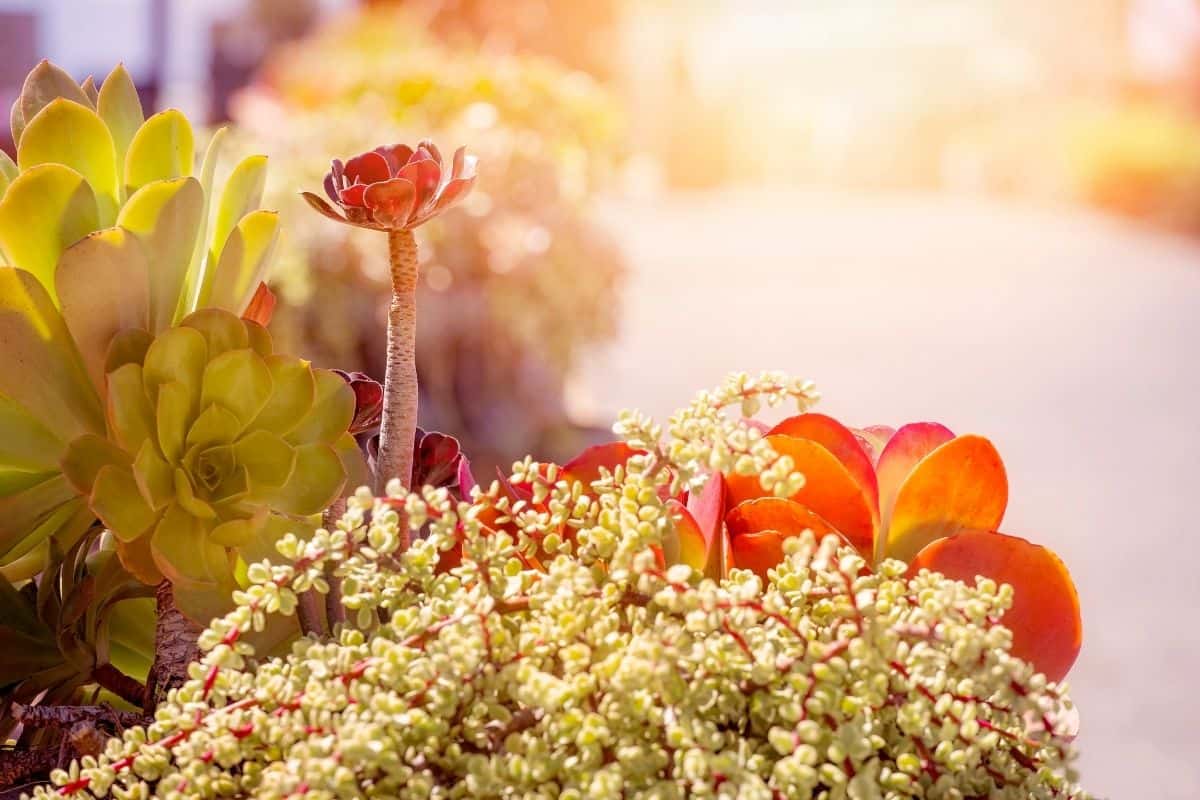
Succulents showcase the most vibrant colors that will improve the look of your garden. You can try mixing and matching the following plants for a more visually appealing collection.
The following genera all have succulents in them that can tolerate full, direct sun. To help you out, each genera has a brief description and an example species!
Adenium - Adenium obesum

Buy it from:
The Adenium genus houses the succulent shrub, Desert Rose. Species from this genus are known for their large bases and often work very well as bonsai plants. These beauties are especially desert hardy: they can tolerate full blasting sun for quite a long time! The flowers are a mesmerizing hot pink and pure white combo with yellow along the intense red veins toward the center of the flower. The shrub itself has a massive blend of roots and stem called a caudex. The skin/bark is very pale in color which contrasts the dark green leaves. Be careful though, this plant is deadly!
Aeoniums – Mardi Gras

Buy it from:
Aeoniums are one of the hardiest succulents. Their leaves are heavily coated in a shimmering wax that protects the spoon like leaves. The Mardi Gras hybrid is wildly colored with variegated leaves that have a pattern of hot pink 🡪 burgundy 🡪 hot pink on every leaf. Then, towards the center, the leaves take on a lemoncello type of color with very pale green accents. Pretty much any aeonium other than the Kiwi hybrid do very well in direct full sun.
Agave – Snow Glow

Buy it from:
Masters of the tequila trade use ancient breeds of agave to craft their wares. Most breeds that people use aren’t the type to use for tequila and are definitely considered decorative. Agaves are also an effective barrier as they get larger! Snow Glow is a striking variation. With variegated leaves, a deep oxblood red margin around each leaf and a gentle glow from a dusting of farina, this species truly does glow.
Argyroderma – Agryoderma testiculare

Buy it from:
It might surprise you to find out that Lithops aren’t the only mesembs! Agryoderma species are known for their paired leaves that alternate in direction each season. There is a great deal of variation in leaf shape too. They are also known as split living stones due to their slight stony speckling and shape. Rather than the solid shape of a lithops, agryodermas split down the middle of the plant. This results in two ball shaped leaves with flat surfaces towards the center. As they grow, old leaves die, and new leaves come through the center. They can form dense mats that appear blue in color.
Borzicactus (or Cleistocactus) - Cleistocactus sepium
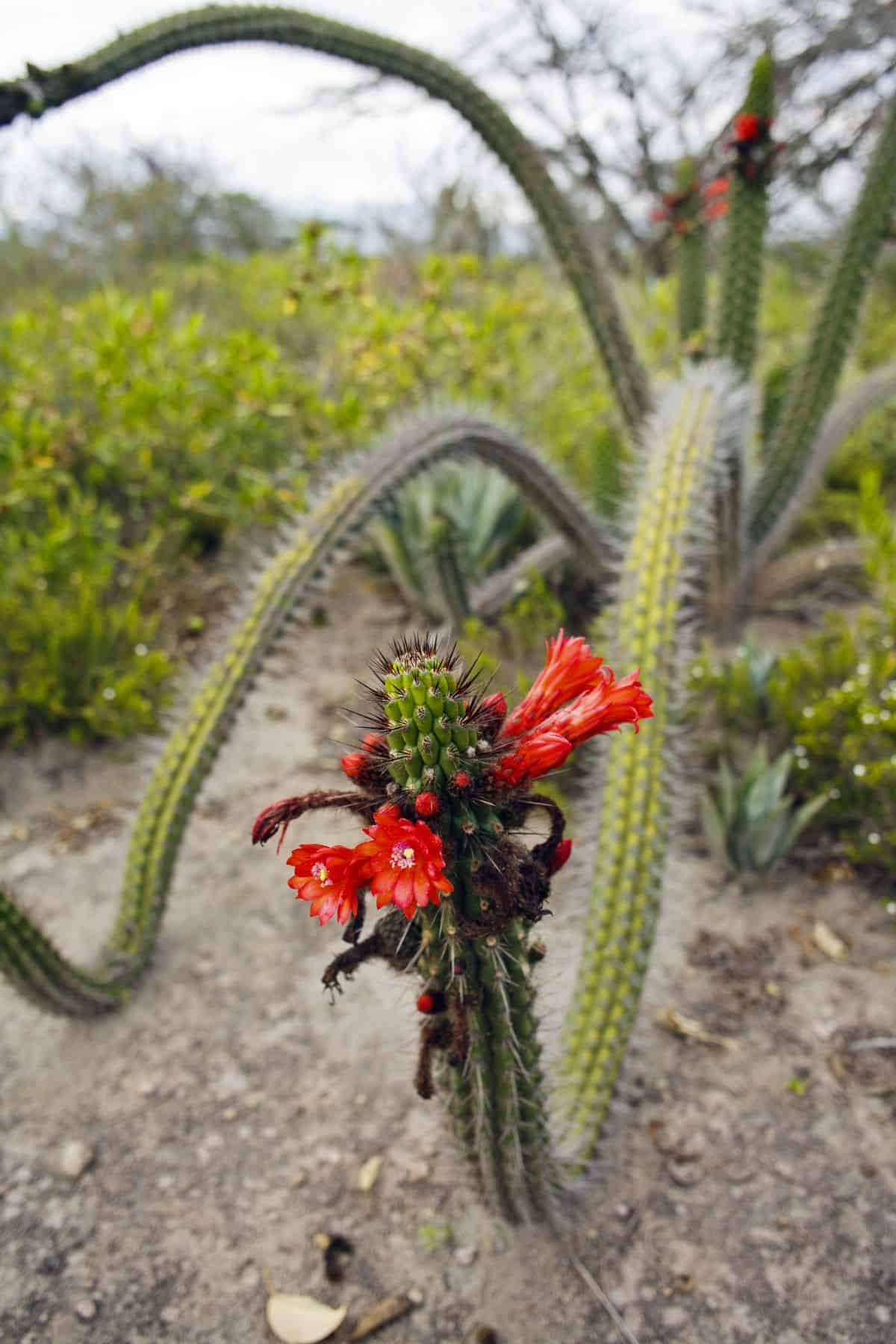
If you are more of a cactus collector, then you want to take a look at the borzicactus genus. These cacti tend to branch frequently at their base as well as easily propagate. Rather than the striking height to thickness ratio of smaller cacti, the sepium looks more like an elongated barrel cactus. Stems curve drastically, and all of the flowers they produce are at the terminal, or very tip, of each branch. A special feature of this species is that it has more than five different names. Because of how unique this cactus is, several horticulturists changed the name over time!
Cephalocereus – Cephalocereus senilis
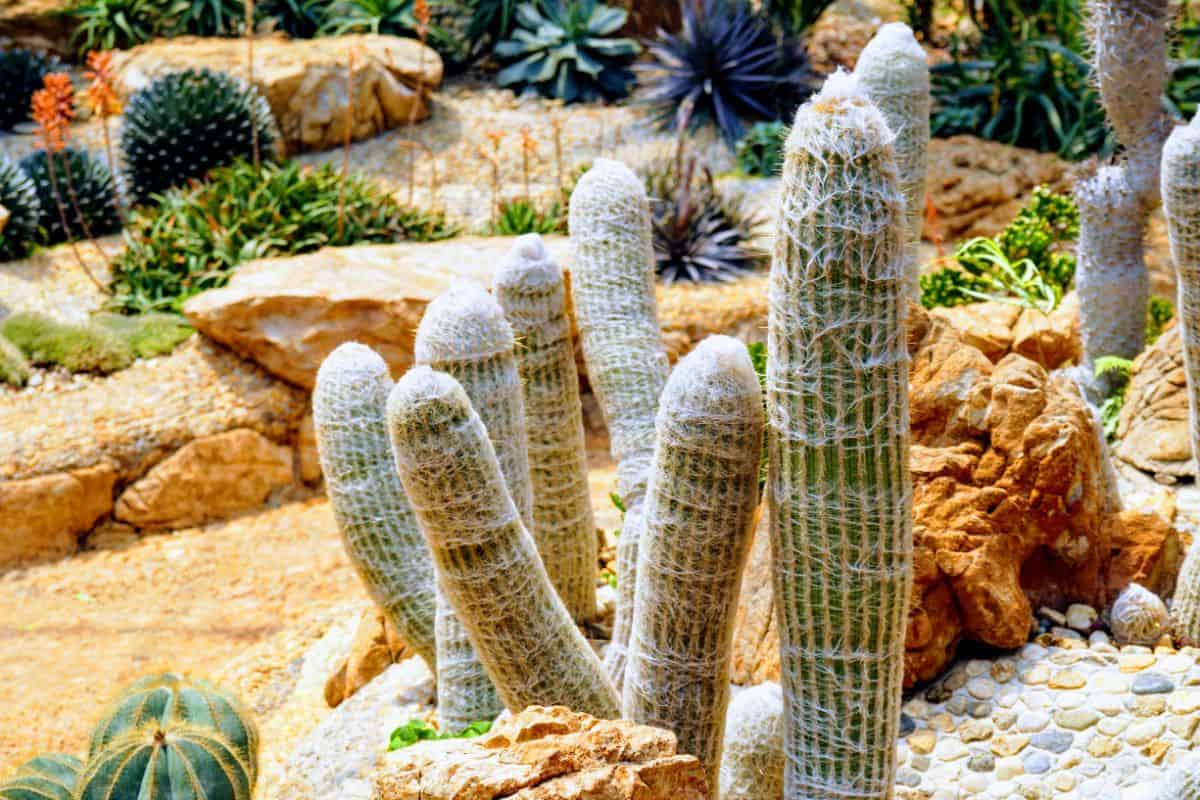
Buy it from:
What ties these cacti together is their characteristic blue-green skin, how they grow, their flower shape and the arrangement of their spines. The Old Man cactus is a prime example and entertaining to say the least. The intense coating of hair serves to protect the skin from intense heat. Consequently, this also means that the cactus needs direct full sun at all times. They can bunch together, however, Old Man cacti can also spread out to cover vast areas of land. This species doesn’t need a lot of care but be forewarned: avoid dampening the thick coating of hair. Cacti and other succulents with a coating of hair can easily get root rot if they stay wet at their base.
Cheiridopsis - Cheiridopsis denticulata
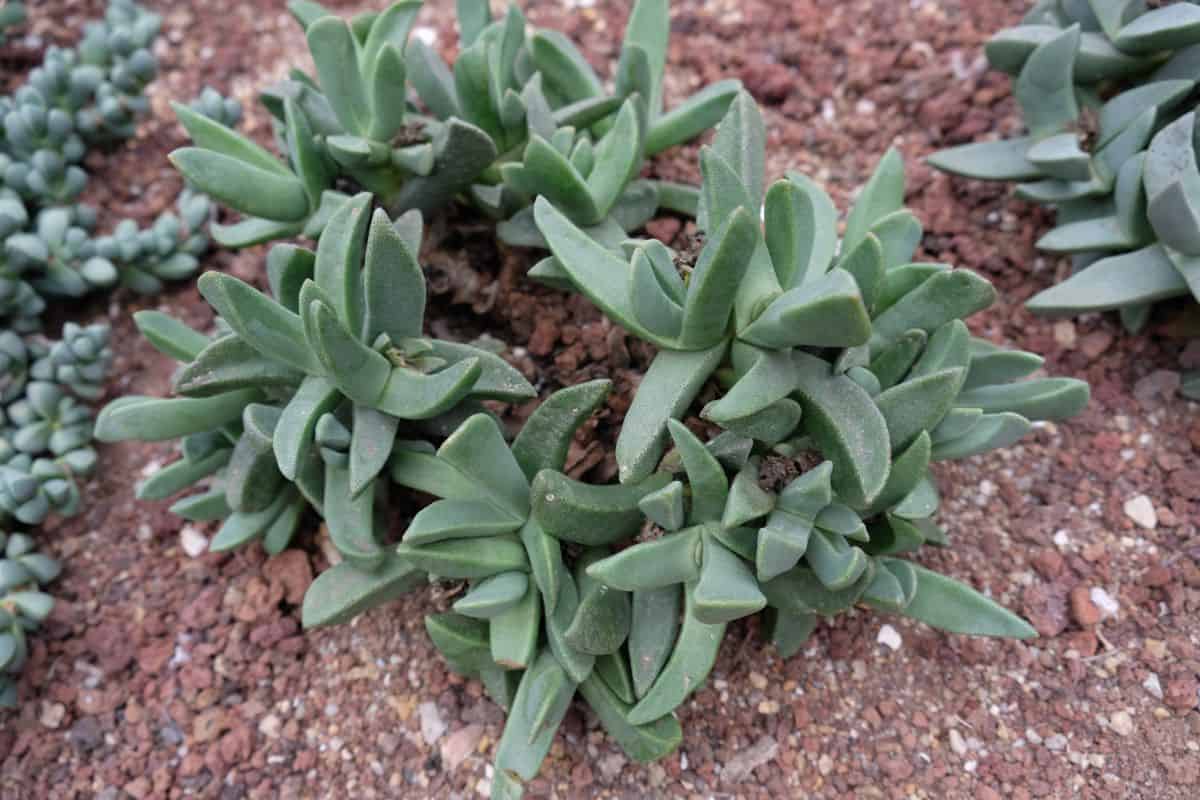
Buy it from:
Cheiridopsis is known to have varying levels of splits in the leaves. They are all flowering species and most of them are going to be more effective as ground cover or statement pieces. The representative species is…. Lobster Claws! This little beauty is a low growing succulent that splits down the middle kind of how Split Rock species are. Instead of looking like stones, these look like lobster claws in both contrast and how the leaves are spread. Lobster Claws are also flowering plants and they have daisy-like, white and gold flowers. These are ground cover plants so make sure that whenever they grow to the edge or close to the edge of their pot, they immediately need to be repotted.
Cotyledon – Cotyledon tomentosa
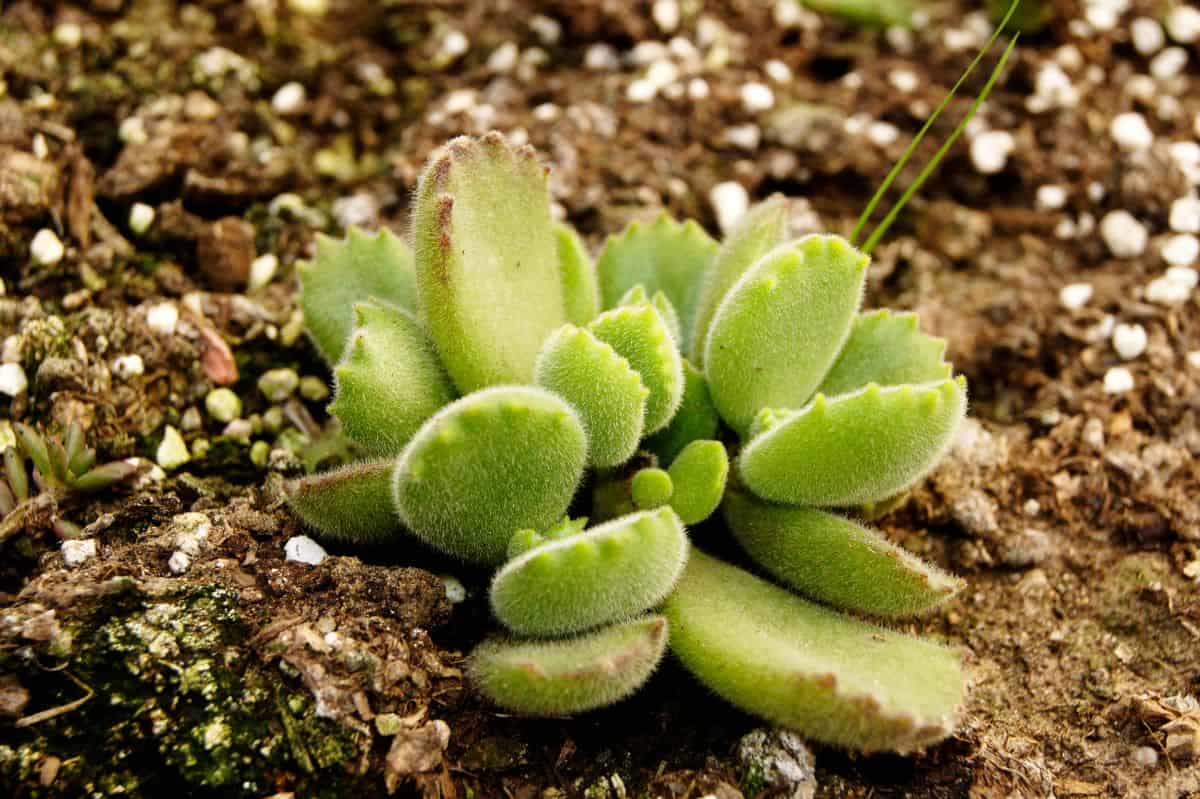
Buy it from:
Succulents from this genus are hardy and ready to take on the sun! Bear Claws are a particular species in this genus that literally resemble a bear’s claws. They are fluffy both in texture and shape since both sides of the leaves are rounded outward or, convex. Along the top or terminal margin, Bear Claws have several thick dark spines that resemble claws. They are a short species with beautiful orange flowers.
Cylindropuntia – Cylindropuntia fulgida
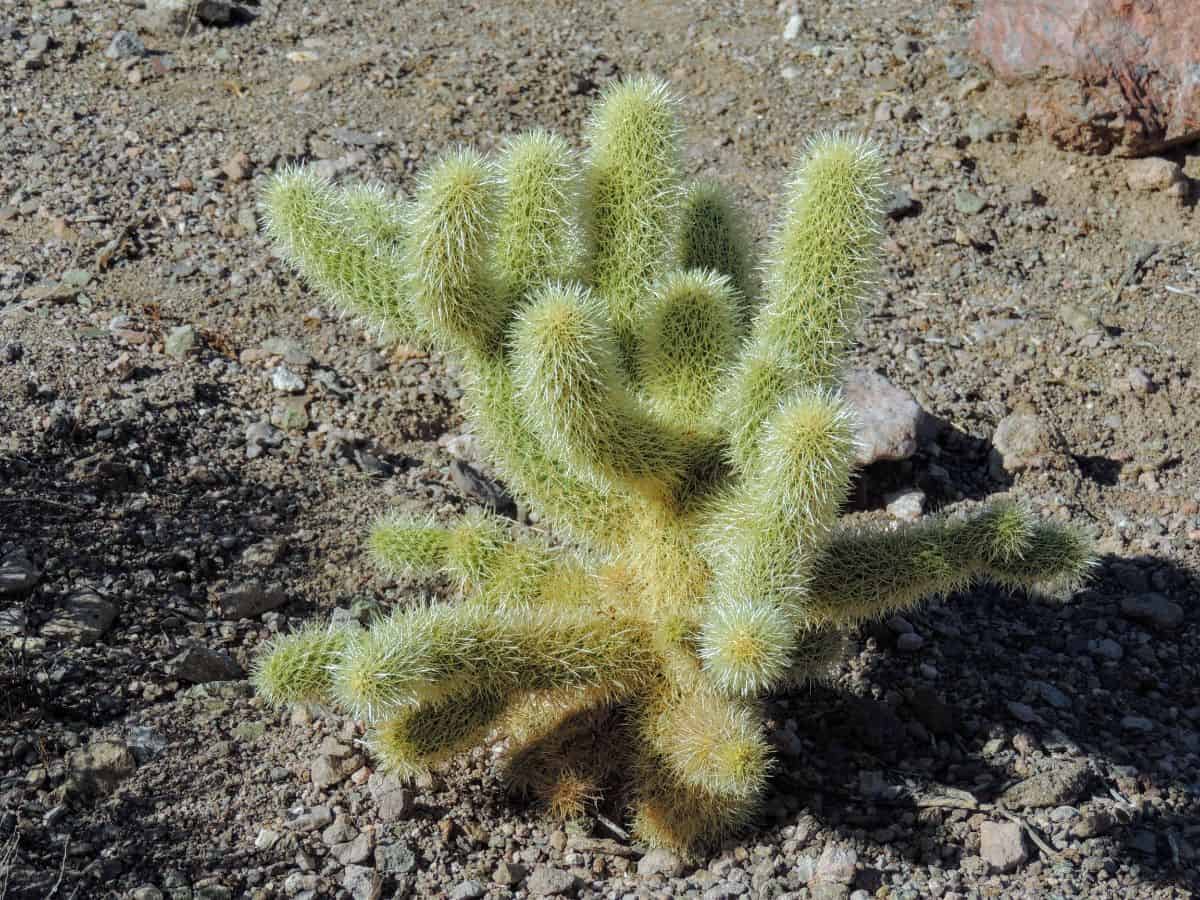
Buy it from:
Native to harsh deserts and eight hours of direct sun, Cylindropuntia cacti are often referred to as cholla cacti. One of the most interesting species is the Jumping Cholla. While it isn’t hilarious when it is happening to you, it’s the funniest thing when someone else has been caught by a jumping cholla. You can barely brush by a jumping cholla and their segments will pop off! They are particularly nasty if they get deep enough into the skin. They are known to be very difficult to remove.
Delosperma – Delosperma cooperi
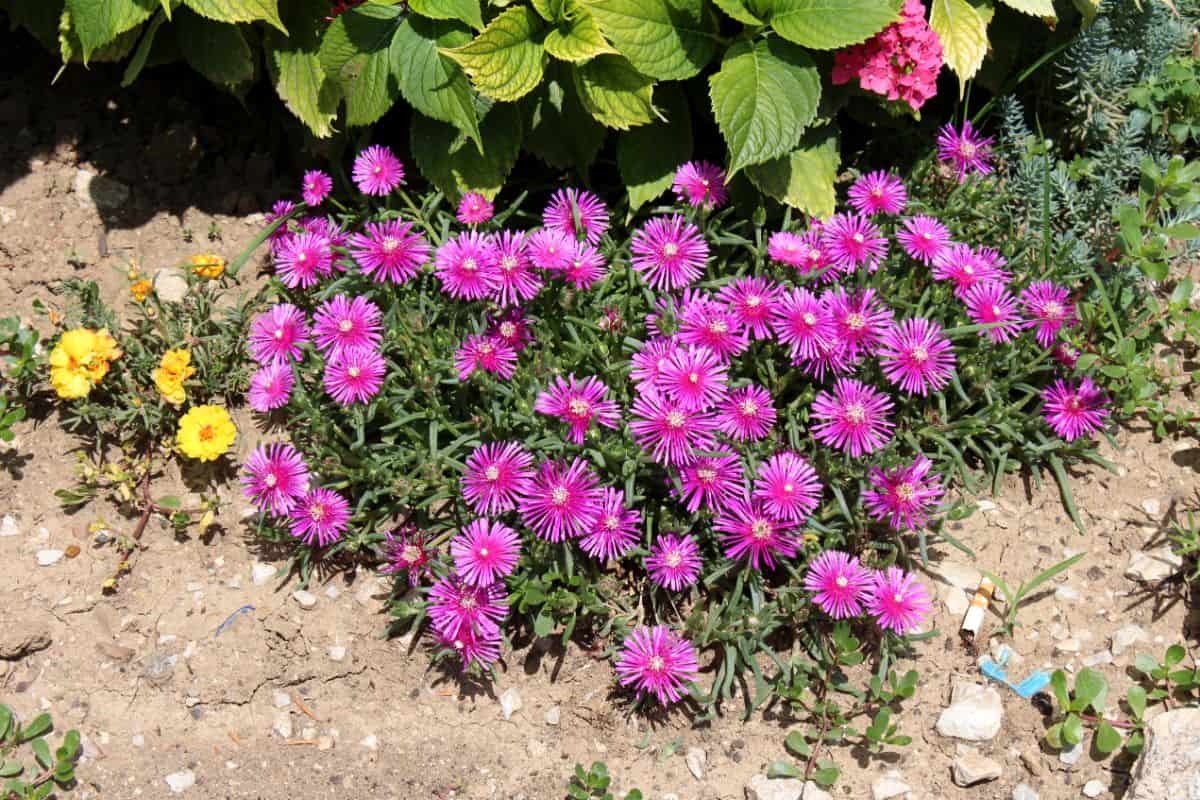
Buy it from:
Iceplants were first discovered and introduced into the gardening community in the 1990’s. Since then, the genus has evolved into several species with varying colors of intense flowers. Even darker colors like the flowers of Delosperma cooperi, the intensity can still be a bit blinding. All ice plants are extremely hardy plants: they require direct sunlight at all times of the year and they are especially cold hardy too!
Dudleya - Dudleya caespitosa
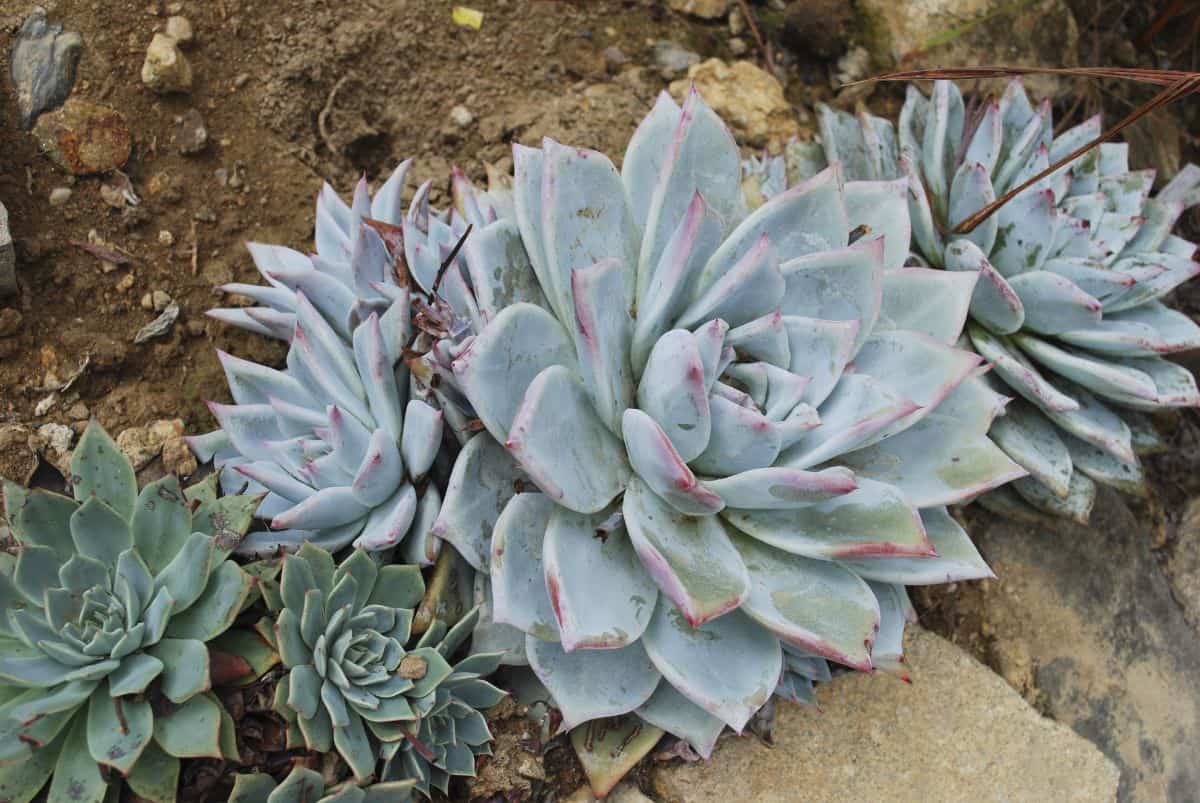
Buy it from:
If you want to dive into the world of ancient succulents, then grab yourself a Dudleya for that bare front yard to add thrilling textures and colors. Believe it or not, this genus has several endangered species due to how many of them have specific environments. That specific environment is no less than full sun and plenty of heat. Dudleya caespitosa is a perfect example of a rosette type dudleya. With delicate looking blue-green leaves while young, a mature caespitosa has almost finger shaped leaves!
Echinocactus – Echinocactus grusonii
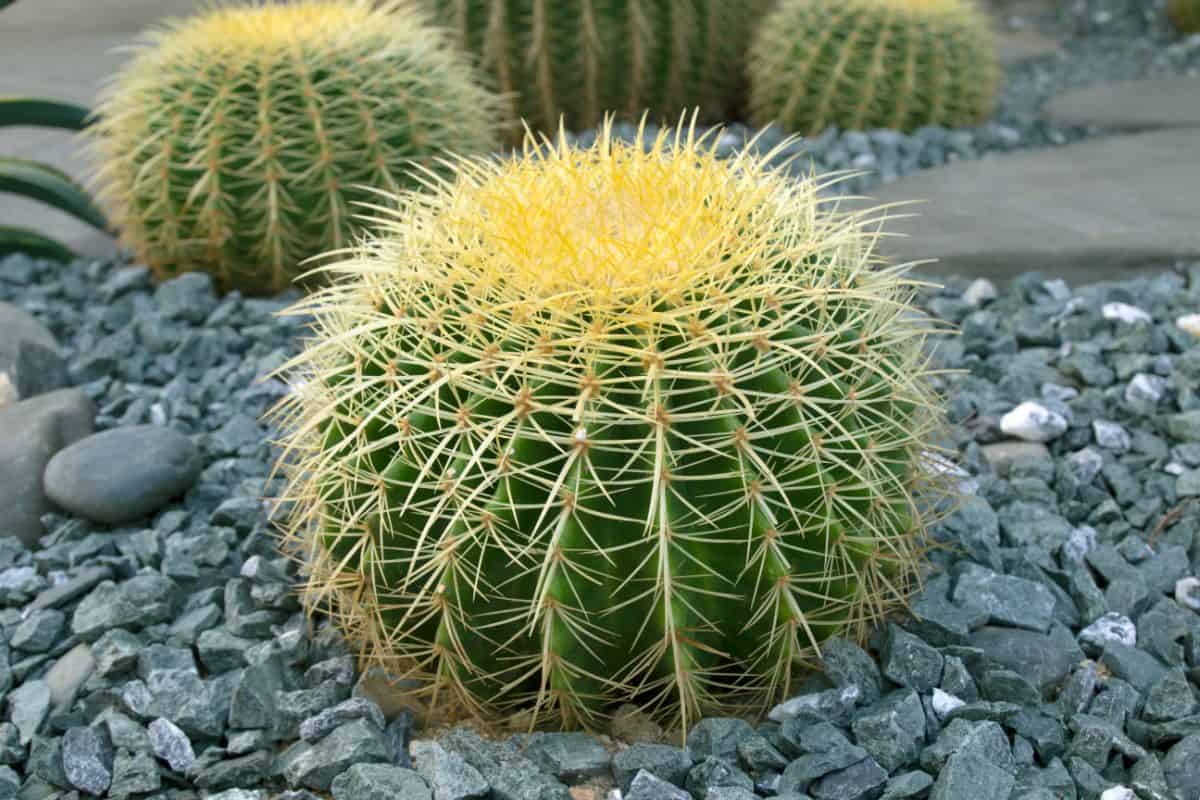
Buy it from:
The Golden Barrel cactus and others have been mentioned on a few different lists here. Barrel cacti are spread across two different genera. The shape and size of the plants in this genera are going to vary. Their key characteristics are the spines and how they lean in a way to protect themselves from sunburn. Golden Barrel cactus is a fun species because they look like they are covered in a halo. As these cacti get older, they tend to elongate slightly as well.
Echinocereus – Echinocereus engelmanii

Buy it from:
Hedgehog cacti are smaller, compact, and their spines resemble that of a hedgehog. It is interesting that they are all so similar in the way the spines are arranged on the cacti. With Echinocereus, they prefer direct sunlight. If any species of Echinocereus has too little sunlight, they will refuse to bloom. The engelmanii is a stunning beauty. With intense purple to magenta flowers, the low growers are still show stoppers.
Espostoa – Espostoa guentheri

Buy it from:
The Espotosa genus is known for their ability to live in ranges of altitudes but they all have to grow at at least 800 m above sea level. As to the selected species, they have prominent gold spines and still produce characteristic fuzzy spines. Flowers rest on clouds of the fuzzy spines and only bloom once. Guentheri has similar characteristics as the rest of the genus. One of the marked differences is the orange puff that surrounds where flowers are going to appear.
Faucaria – Faucaria tigrina

Buy it from:
Species in this genus are known for their sharp teeth of varyin deadly sizes! Just kidding. Species of this genus are known to have several different growth patterns but their uniting factor is definitely their teeth. Sometimes the teeth can curl and others are going to be very sharp and painful if you get to close. Tiger’s Jaws is a great example for this genus. They have larger, thicker leaves and the ‘jaws’ are wide open.
Fenestraria – Fenestraria aurantiaca

Buy it from:
The common name for species and hybrids in this genus is Baby Toes. Many of them are going to be low growing species and they also look very toe-like. It can be a bit strange at first, but I think they are great representations of ogre toes or ogre ears. The biggest kicker with this genus? It is a monotypic genus! As of this point, Fenestraria only has the one species. Who knows, maybe you can discover the next species.
Ferocactus - Ferocactus echidne

Buy it from:
What sets these cacti apart is their barrel shape combined with how they flower. Rather than a single flower at the top of the plant, these cacti have several small flowers that reach off of spine nodes. When you look down from above, they seem to have a halo of flowers that surround the top most nodes. F. echidne is good representation of the general shape and size of the species in this genus. Out of all of them, F. echidne has a beautiful sunset type of flower. The center is bright yellow with edges that fade to a sonoran brown.
Frailea – Frailea castanea

Buy it from:
Species in this genus tend to be native to South America and are characteristically small! They are a type of mini cactus with a few variations. Many of them have a columnar and globulose shape. Several of them look like mini baseball bats. The example species here is one of the rare variations that makes the species look more like a castanet rather than a baseball bat. It maintains the rest of the characteristics of the genus including their special hunger for heat and sun!
Hechtia – Hechtia texensis
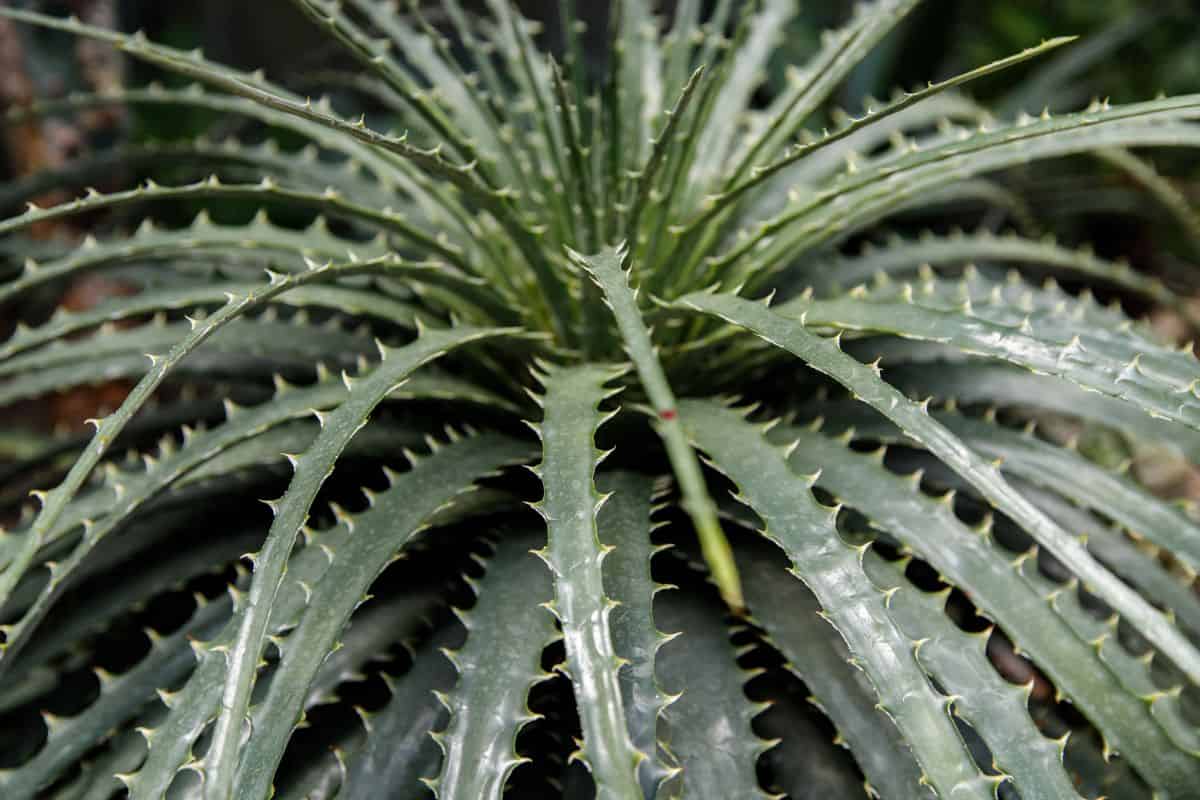
Buy it from:
There are only 50 species of hechtia that we know of currently. With this genus, we can trave them back to bromeliads with a major difference occurring in their flowers. Bromeliads have complete flowers with male and female reproductive organs. Instead, Hechtia have separate flowers with the different organs. The example is the Texas False Agave which looks similar to Agave lechuguilla. What separates the two is the deep red coloration of the H. texensis. The red can cover the entire leaf or stay along the margins.
Hoodia – Hoodia gordonii

Buy it from:
Hoodias are an interesting species to take care of. The flowers that they produce are made of one solid petal with several points. They are notorious for giving off a smell that is like feces. Many of them look as though they are spineless since the nodes grow into fine tips. Some of them do have spines and there are a few species that don’t. For example, the Bushman’s Hat is a species in the genus that doesn’t have spines. It is also one of the species in this genus that are known for potential medical properties according to locals.
Kalanchoe - Kalanchoe daigremontiana

Buy it from:
Kalanchoes are a varying and rather fun group of succulents to take care of. Kalanchoes are in the same family as stonecrops much like sedums. They aren’t as prolific when it comes to ground cover, however when it comes to replanting themselves via seeds or offshoots, kalanchoes take the cake! K. daigremontiana is one of my favorite kalanchoes (and so is the Mother of Millions!) because it has such delicate offspring that almost immediately take root and spring into another.
Lapidaria

Buy it from:
Yet again, we have another monotypic, or single species, genus! This genus is considered another mesemb because of how it resembles Lithops and Diantherus species. What separates these tiny tikes from the rest is that instead of single leaf pairs, they start with two leaf pairs. As they mature they will finally have a collection of three rosettes of pale pink paired leaves. L. margaretae is also called the Karoo Rose and once they reach their full size, they will have up to four pairs of leaves.
Lobivia – Lobivia famatimensis
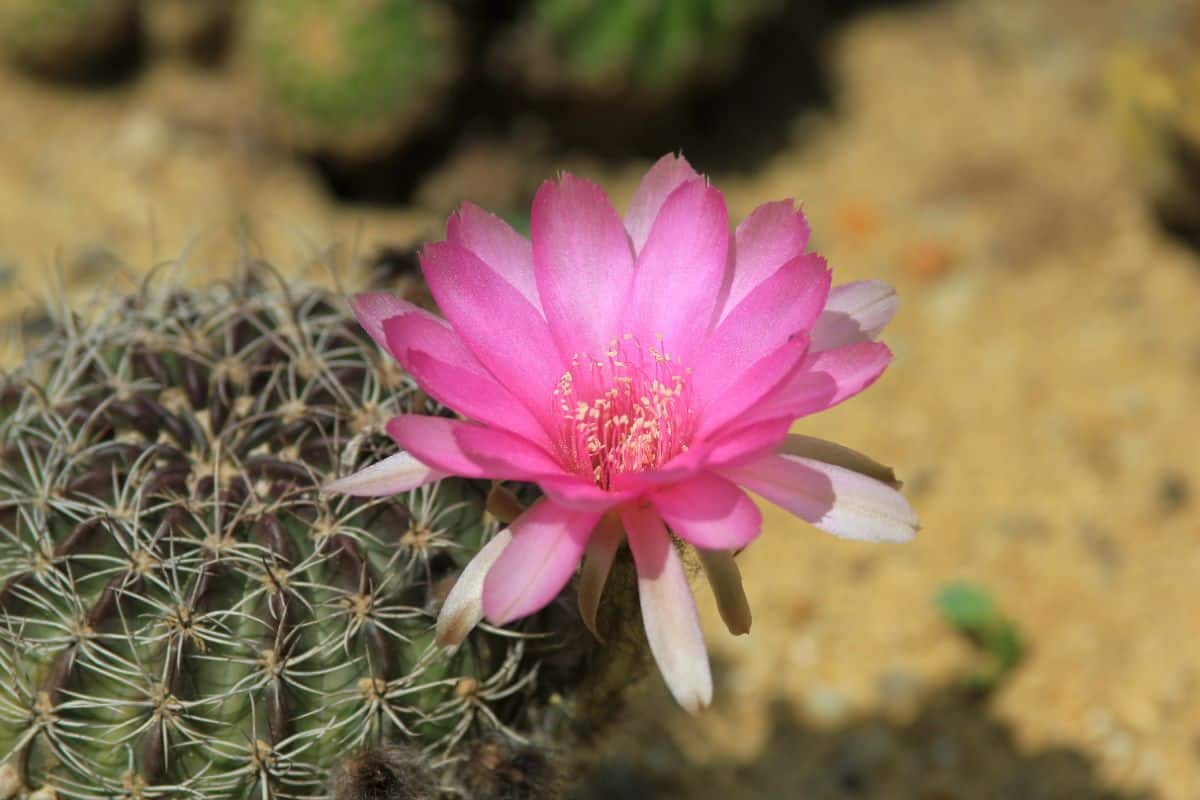
Buy it from:
The genus Lobivia is known for a very characteristic bunching style of dwarf cacti. The stem starts off as a single globulose cacti. From there, branches start to grow off of the main stem. At the end of each arm, is where the flowers will appear. The genus gains it’s name from an anagram of Bolivia which is where the vast majority of the species originate. The example species is an orange variation that produces bright yellow flowers that practically dwarf the mother stem. The species in this genus are now included underneath echinopsis.
Manfreda – Manfreda maculosa

Buy it from:
Manfredas are very interesting plants that are slightly different than agave plants. In recent years, this genus was dissolved into the Agave genus. All Manfredas are also called tuberoses and they used to belong to the asparagus family! What separates them from other agave is that each species of Mangave has unique colorations that aren’t guaranteed from generation to generation. The example species is now called Agave maculata. It is known for the deep burgundy speckling and mottling along its leaves. You can also find this species underneath the name Texan Tuberose.
Mangave – Black Magic

Buy it from:
Mangaves are a recent hybridization that took off like wild fire. The strength of the agave gives the mangave the strength to get through tough seasons and the manfreda aspects are more leaves and a softness to the spines that makes the plants easier to handle. Another aspect is that the manfreda has more stabilized colorations. The hybridization has allowed for colorful coveted collections that are continuing to grow. Black Magic is an absolutely stunning representative of this genus. They are spotted heavily which makes them almost look like they are solid black! The tips drag downwards and they require constant full sun.
Melocactus – Melocactus mantanzanus

Buy it from:
All species in this genus are commonly referred to as Turk’s Cap cacti. They all share the same characteristic of a large flowering body that appears at the very top of the cactus every growing season. This flowering body is called a cephalium and they can produce hundreds of flowers on the woody structure. M. mantanzanus is one of the more popular variations as they are known to be smaller and have a very bright collection of red roses.
Nananthus - Nananthus vittatus
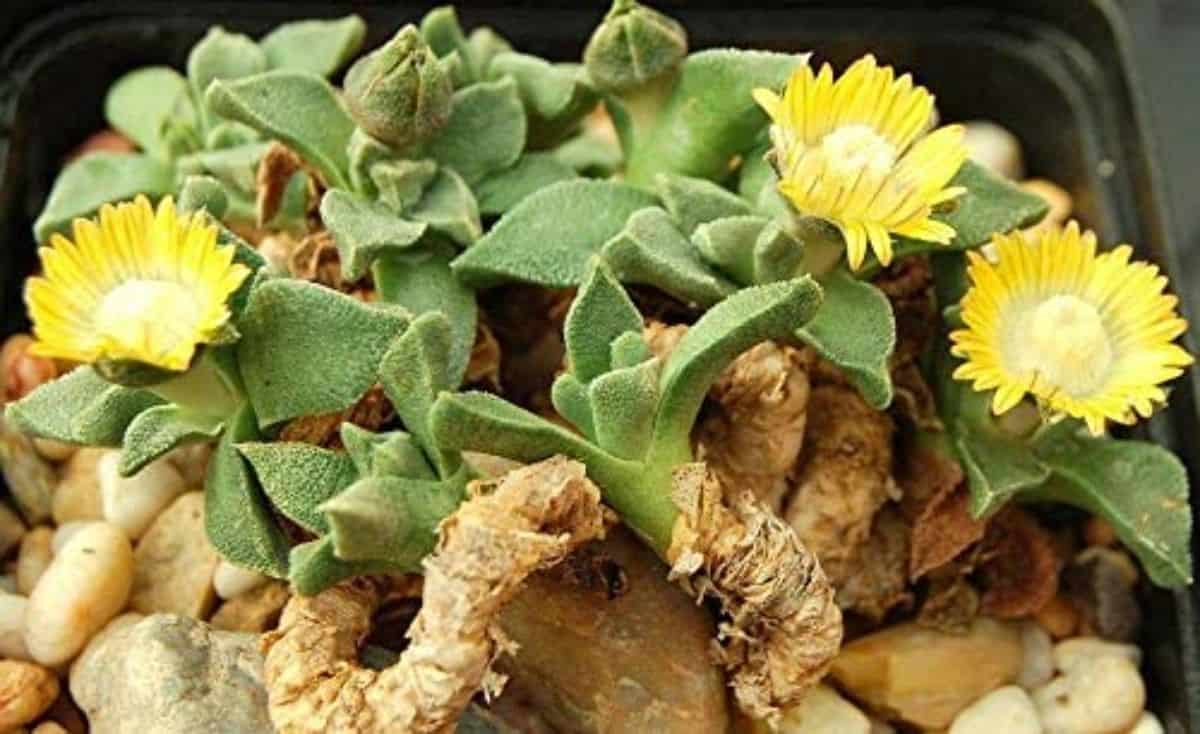
Buy it from:
The species in this genus are known for their very large caudexes which makes them a huge attraction to bonsai lovers and creators. They MUST be put into larger pots than other succulents as their root systems are massive compared to the amount of leaves that they produce. With this species, maintain the watering and proper soil conditions otherwise it can be very susceptible to root rot.
Neoporteria – Neoporteria senilis

Buy it from:
As a genus, Neoporteria is home to finely spined cacti with several different forms. The flowers have several different colorations and can even have some variegation. Generally speaking, the flowers have a pleasant smell and ribs with alternating areoles. The example species is a really interesting representation of the genus: they have such thin and winding spines that they look like small bird nests! They have tubular hot pink flowers with spike looking petals.
Nyctocereus – Nyctocereus serpentinus

With this genus, you can expect lovely white flowers that only open at night. They are bat pollinated plants with branches that either climb or they can also bend downward as well. With the flowers, they are generally white with some yellow along the margins. They do produce edible fruit as well! Yet another superb specimen that is in a genus of its own.
Opuntia - Opuntia macrocentra

Buy it from:
Opuntia is a extremely varied genus. From size to spread to color, there are hundreds of combinations with these brilliant cacti. Their characteristics can be a little broad, but generally speaking they are a paddle type of cactus with varying lengths of spines. They are known for their edible fruits that have a sweet and tangy flavor with a slight grit in the meat of the fruit. Opuntia macrocentra not only has delicious treats, it also is a colorful representation of the prickly pears. Their paddles vary in color from deep purples to light pinks. The spines are the cherry on top: they are long and black!
Orbea – Orbea variegate

Buy it from:
Orbea is a very interesting genus named for the orb that is in the center of the flower. This orb is technically called an annulus and it is a raised ring that is in the center of the flower. Each flower is characteristically five pointed. Most of the flowers can have a carrion type smell as well which is where the Orbea variegate gets its name. Carrion Flowers are very attractive and vary by the patterns on the flowers and stalks. O. variegate has dark maroon flowers with patterned yellow flecks.
Pachypodium – Pachypodium lamerei
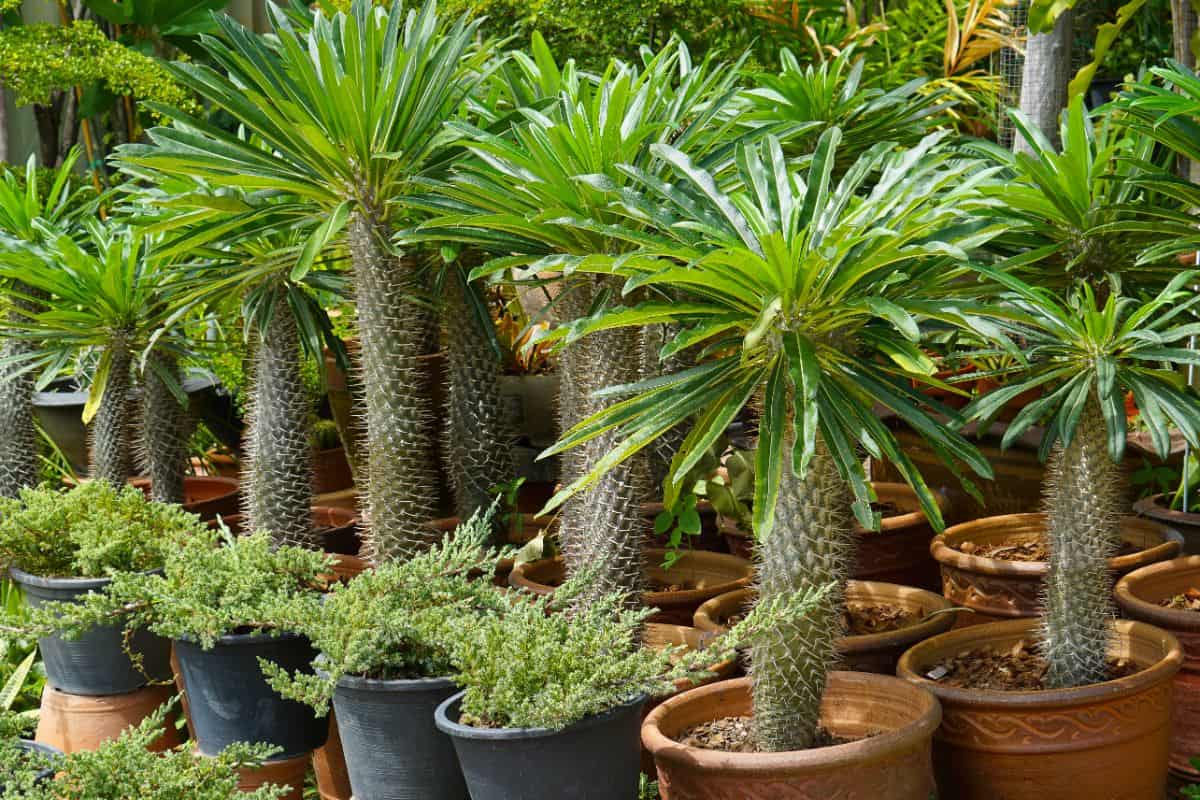
Buy it from:
These succulent shrub trees are absolutely fascinating! They have a characteristic called pachycaul which means that the thickness and height of the trunk don’t really match up with the size of the branches or leaves. They look like trees that forgot how to grow branches. The trunks are also covered in spines and the leaves will show varying shapes. The majority of this genus is found in Madagascar but you can get your hands on the P. lamerei. Madagascar Palm can be grown indoors or out, but they will thrive outdoors in direct sun and full heat.
Pleisopilos – Pleisopilos bolusii

Buy it from:
Did you ever think you would read these two words together: liver plant. If you didn’t, now you have because that is exactly what species from this genus are called. They are a mesemb that look like green livers. When it is time for blooming, these mesembs are dwarfed by their flowers. It is thought that they are smaller succulents in order to reduce predation. P. bolusii differs from others in this genus due to its solid yellow daisy flowers and deep blue green skin.
Sedum – Sedum acre

Buy it from:
Sedum is a varied genus with plants that vary greatly in height, their spread, blooms, and colors. It could almost be said that there is a sedum for every occasion. Sedum have characteristically thick leaves although some are going to have thinner leaves. They grow from a singular stem and have varying grow times. Something that unites them as well is how much ground they can cover. The Goldmoss Sedum is a beautiful addition to any garden be it in a pot or as ground cover. When grown in a pot, Goldmoss Sedum looks like it is a waterfall of sunshine spilling out of the pot.
Sempervivum – Sempervivum tectorum

Buy it from:
- Mountain Crest Gardens
- Etsy
- Amazon
Sempervivums are notoriously hardy succulents that have characteristic rosette shapes and sharply pointed leaves. They can cover ground easily with large, closely huddled mats. They are close to Aeoniums and share a similar moniker: liveforevers. S. tectorum is a perfect example of some of the stunning characteristics of sempervivums. With light green leaves and red tipped leaves, this sempervivum is a showstopper.
Tephrocactus - Tephrocactus geometricus

Buy it from:
One of the most unique characteristics of this genus is that their glochids are sunk further into the areole as compared to other cacti. Their spines vary greatly and colors are expressed at higher temperatures and direct sunlight. Unlike prickly pear cacti, Tephrocacti are instead shaped like strings of eggs. The example used is one of the less spiny variations with blue green skin with a slight ashy undertone . They produce bright white flowers.
Titanopsis - Titanopsis calcarean

Buy it from:
Titanopsis is a plant named for its similarities to limestone. In appearance it can have several divots and bumps that resemble the texture of stones. There are only a few species in this genus and the example species has a great combination of the main characteristics. The ends of the leaves have a combination of scales and circles that create a beautiful texture. Colors vary from light pink to blue green with bright yellow flowers.
Yucca – Yucca rostrata
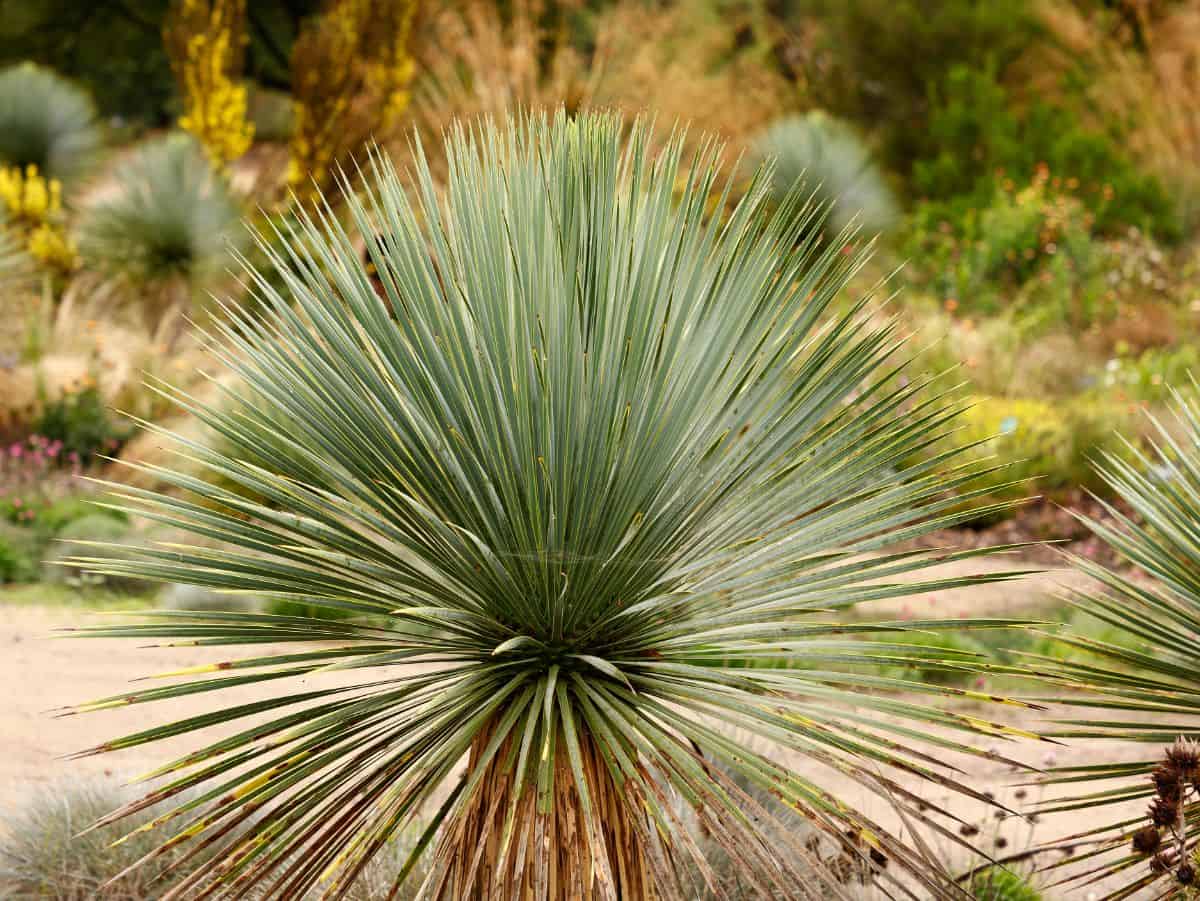
Buy it from:
Yuccas are both trees and shrubs. They have very tough leaves that you have to be careful with: they aren’t friendly to any predators, let alone humans! They produce edible fruits with specific species; however, it isn’t wise to pick them unless you have studied the different species. Yuccas can get very tall and have thick bases that resemble tree trunks. Yucca rostrata is a primarily non-branching yucca with silvery leaves and curved spines at the tips of the leaves: this is what gives it the name Beaked Yucca.
Agave
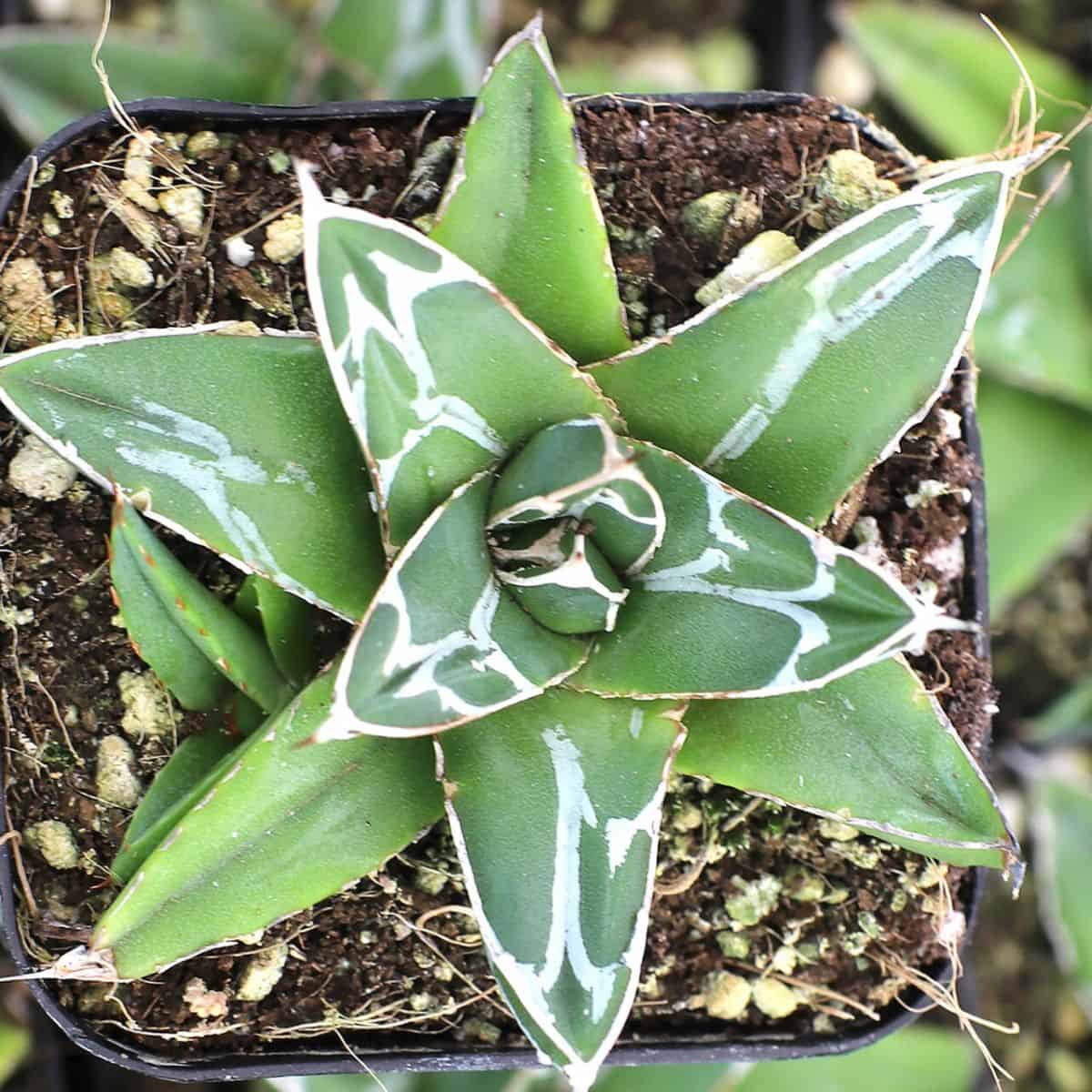
Buy it from:
The first succulent we suggest you take care of is the agave or agave Americana. It’s one of the most common succulents, with a similar shape to aloe vera. The main difference between the two is that the agave grows larger and produces more leaves.
Additionally, you will see a development of yellow or white flowers when the agave blooms. However, you may need to cut the bloom from the stalk, or the agave succulent will grow into a tall plant that resembles a tree.
Aloe Vera

Buy it from:
This list will not be complete without the mention of aloe vera. It is arguably the most popular succulent right now because of its practical applications and low maintenance requirements.
While this list may be about succulents that grow under a full hot sun, the aloe vera will do just fine even in low-light settings. Another advantage of this succulent is that it can grow and repair its leaves after you cut it. However, what really makes the aloe vera a great addition to your garden is that it serves numerous medicinal purposes.
Euphorbia Tirucalli
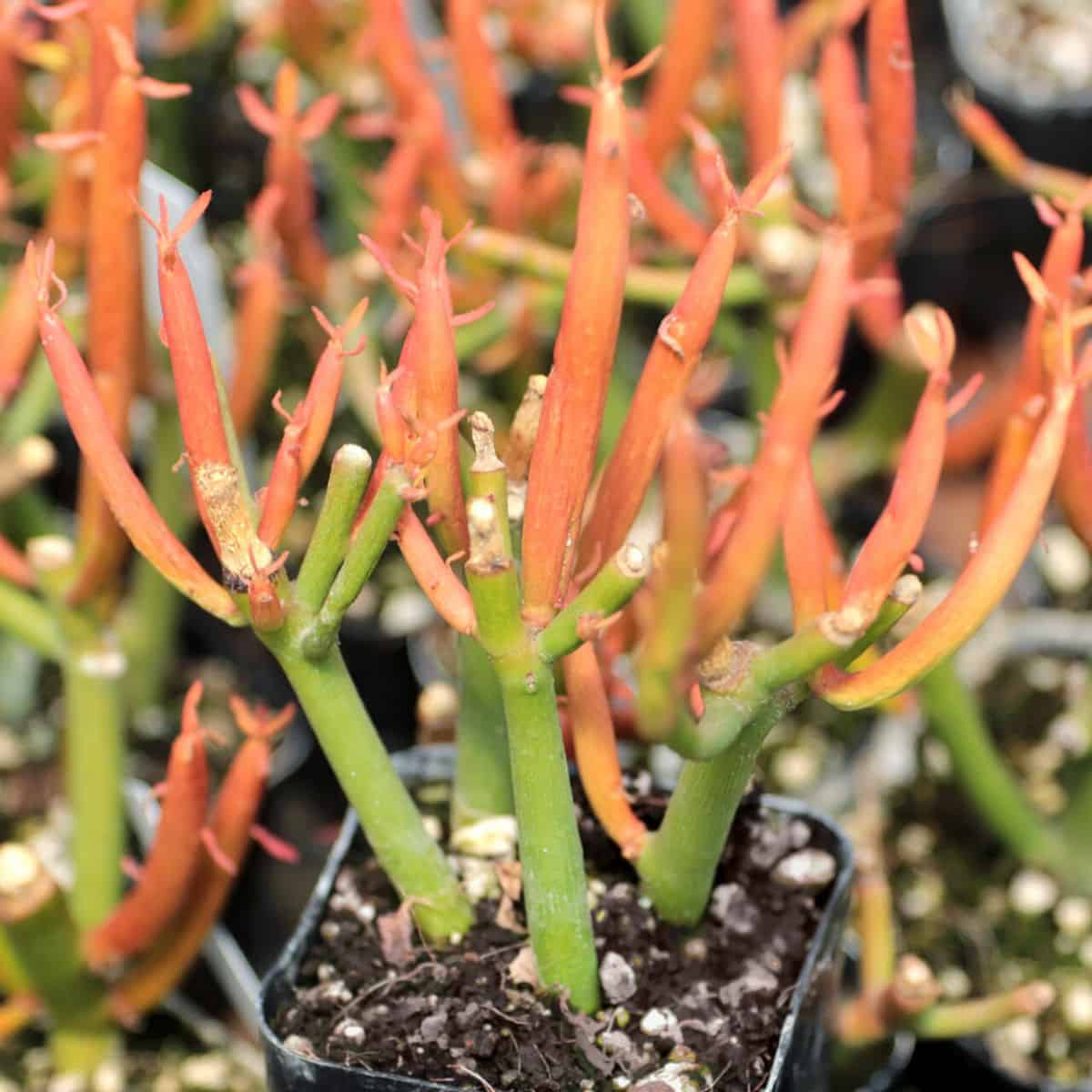
Buy it from:
If you’re more for beauty than practicality, allow us to introduce you to the euphorbia tirucalli. This succulent is better known as the pencil tree plant or fire stick plant.
As its name suggests, it has multiple thin stems that resemble a pencil or a stick, making the entire plant visually similar to a sea coral. The stems turn into a red-orange color during cold weather. Then, they gradually switch to golden yellow during the summer.
The euphorbia tiruacalli doesn’t need too much maintenance. You just need to ensure that the soil is always dry and that the plant gets plenty of direct sunlight. Also, keep in mind that the leaves of euphorbia tirucalli are pretty fragile and eventually detach themselves from the plant.
Aeoniums

Buy it from:
Did you know that you can have what looks like a flower garden without worrying about maintenance? That’s what aeoniums are great for.
No products found.
This succulent only needs to be watered once a week because it’s drought resistant. You just have to ensure that they receive plenty of sun exposure, and that you always drain the soil.
Aeoniums have short to medium stems and produce rosette-shaped leaves. The center of the leaves produces flowers of varying colors, the most common being yellow. Lastly, you’ll notice that the entire appearance of this succulent resembles a blooming flower.
Senecio Mandraliscae
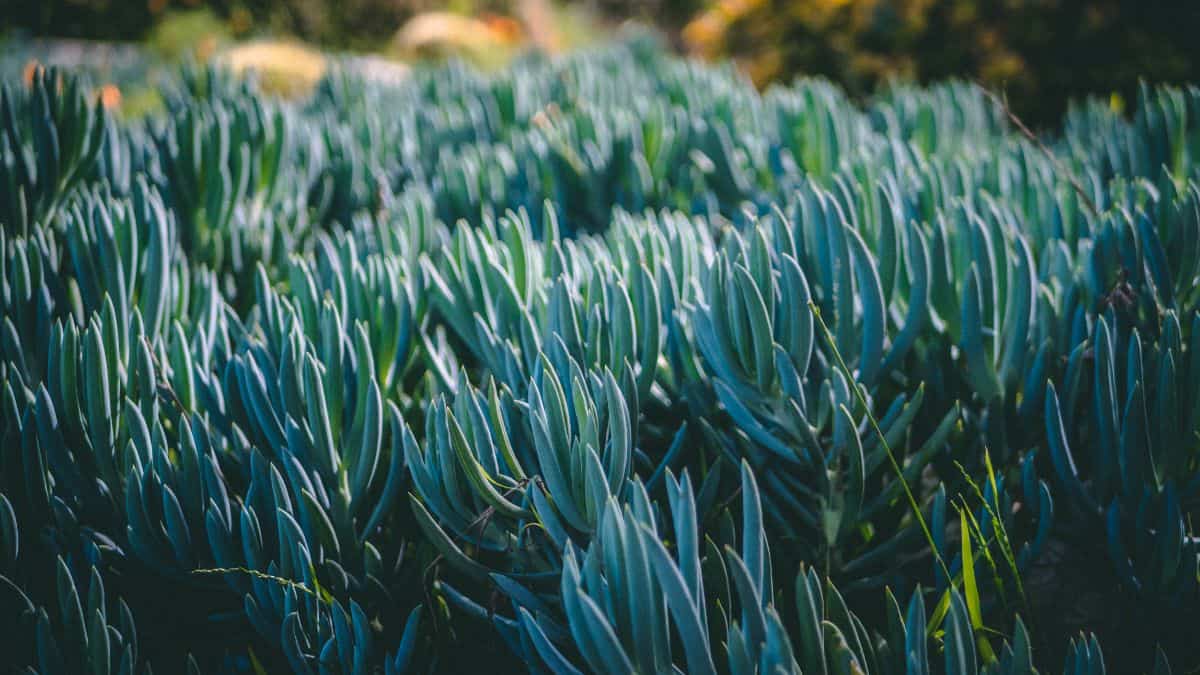
Buy it from:
If you want another sea coral-looking plant in your garden, be sure to include the Senecio mandraliscae in your list. This succulent is also called blue chalk sticks because of the way its leaves grow.
The thin leaves are shaped like a pencil and grow vertically. Also, its leaves are bluish-gray but turn white during summer.
Unlike some of the succulents in this list, the Senecio mandraliscae can reach up to two feet. Nonetheless, it’s also low maintenance and drought-resistant.
You have to be extra careful with them during the winter because the cold weather may freeze its leaves. They cannot tolerate cold temperatures, and they die easily when they frost.
Sedum

Buy it from:
Sedum, also known as stonecrops, thrive in dry and hot environments. One thing you need to know about this succulent is that there’s a wide variety of options to choose from.
Some sedums are short, while others are tall. Additionally, the flowers they produce also differ in color, with some being pink and others white.
What they probably have in common with most succulents is that they grow thick and fleshy leaves. However, they require extra maintenance, such as regular watering, especially when they haven’t fully matured yet.
Sempervivum

Buy it from:
Not all of us plan to grow a garden. Some just want to have a few plants by the window or on a desk where sunlight can reach.
If you belong to this group, smaller succulents are perfect for you, like the sempervivum. This plant produces rosette-shaped leaves. The pointed tip of these leaves brings out a different color, usually red.
The best thing about this succulent is you can place them on your desk or other tight spaces because they’re small. Even though they don’t grow taller than five inches, they require constant watering, except in winter.
Opuntia

Buy it from:
If you plan to include opuntia in your list, make sure that you’re careful with it. It is not because they are fragile or die easily, but because you might hurt yourself.
The opuntia is also known as prickly pear cactus, which means it grows spikes in different parts of its leaves and body. However, the so-called “leaves” of this plant are technically nopals or pads.
While the opuntia may not be as beautiful as the other succulents here, it is still quite useful. Edible fruits grow at the edge of the pads, which are rich in fiber and antioxidants.
Night Blooming Cereus
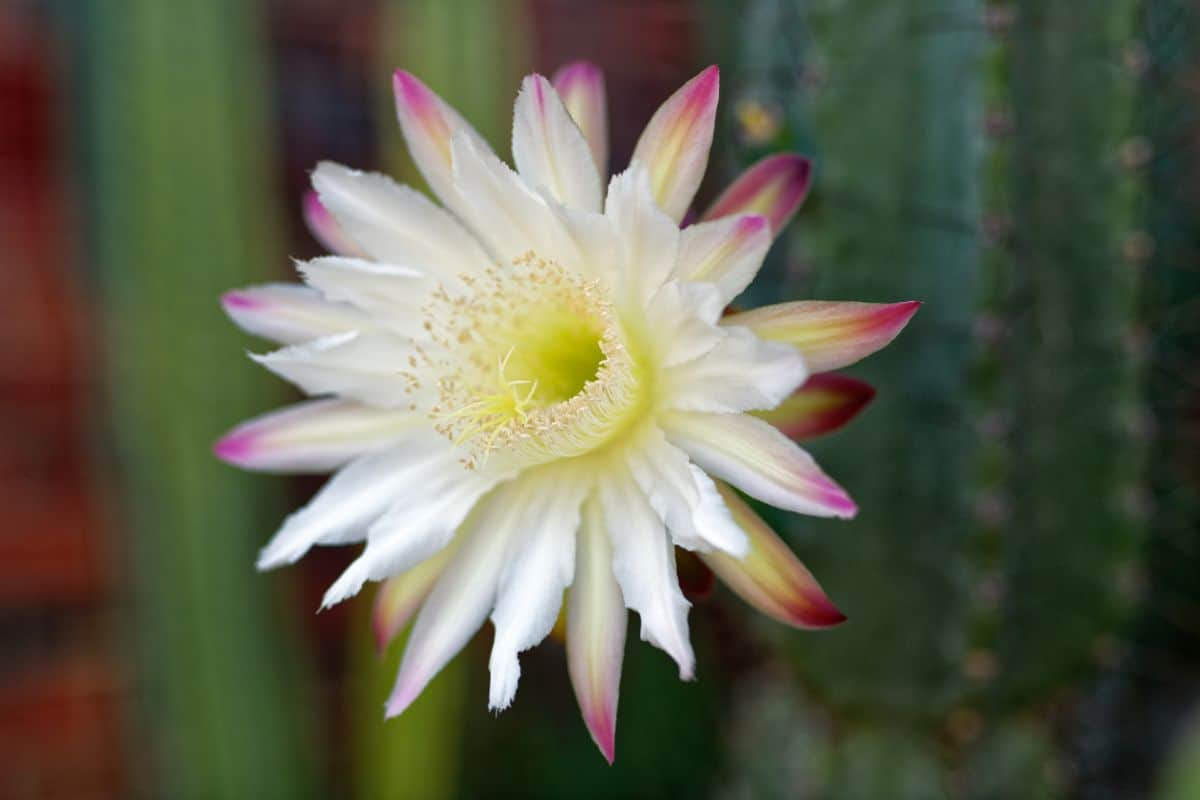
Buy it from:
Ironically, the night-blooming cereus thrives under the sunlight but produces flowers during cold nights, hence the name. There are four different types of night-blooming cereus, but all of them are desert cactuses. For this reason, you will find that they grow well in warm temperatures and under direct sun exposure.
Also, the flowers they produce are quite large and exudes an extraordinary fragrance. However, you need to make sure that you always drain the soil. Otherwise, they might die early.
Pachyphytum

Buy it from:
If you wish to include another low-maintenance plant in your list, you may want to learn more about this next succulent. Some pachyphytum produces bean-shaped leaves, while others are pointed and rosette-shaped.
The bean-shaped leaves of the pachyphytum are sometimes ash-gray, which is why you can easily mistake them for pebbles. On the other hand, the rosette-shaped pachyphytum leaves range from vibrant to ash-green.
In caring for this succulent, make sure you water it regularly when it hasn’t fully matured yet. Also, it will grow best when exposed to full sun. While it can tolerate cold weather, leaving it in freezing temperatures for long periods is not advisable.
Ocotillo
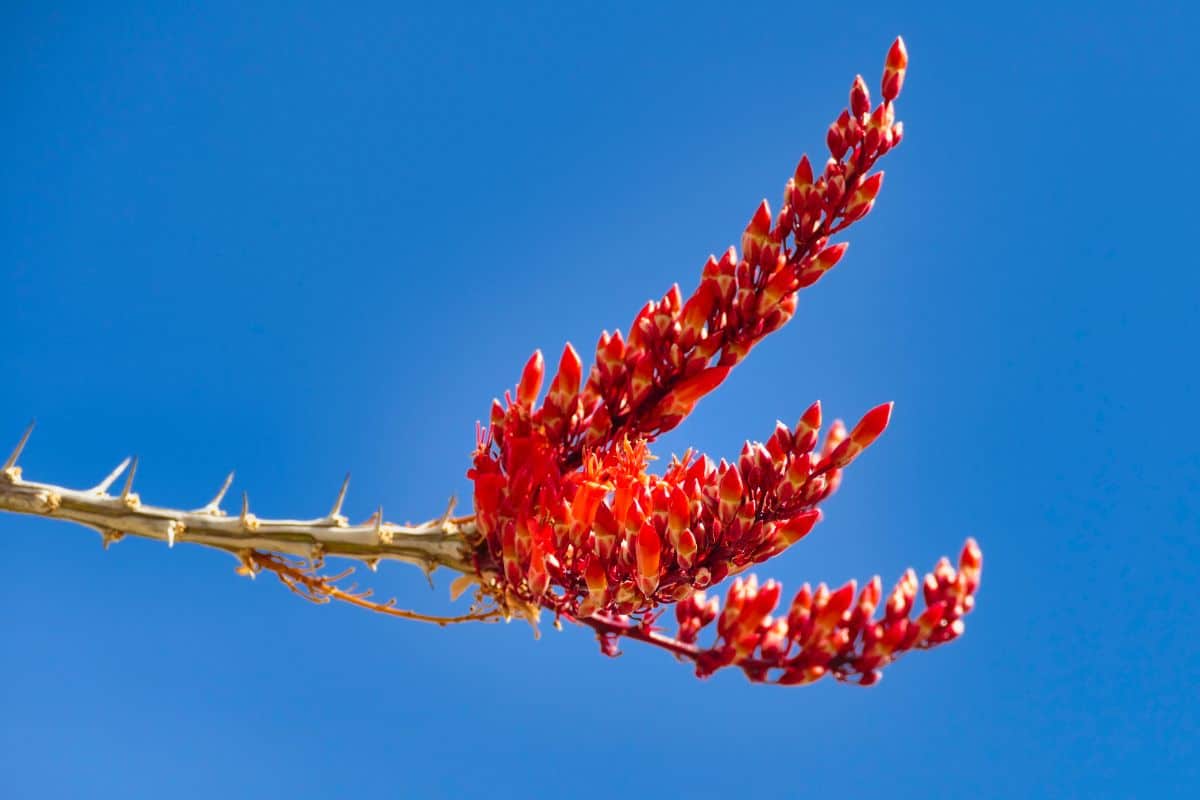
Buy it from:
For green thumbs with plenty of space at home, the ocotillo makes for a wonderful addition to your collection. This semi-succulent enjoys constant exposure to the sun and can thrive in hot environments.
The leaves of the ocotillo do not last long, though, as they detach themselves as soon as they grow out of the stem. Even so, it’s still a beautiful plant because of the red flowers it produces at the top of the stems. This succulent can reach a staggering height of 25 feet despite not needing constant maintenance.
Echeveria Macdougallii

Buy it from:
The echeveria macdougallii is commonly a green succulent, but other variations produce pink, purple, or red leaves. Some of these produce fully-colored leaves, while others only show the colors at the tip. While this succulent starts small, it can reach a height of about 12 inches when it matures.
Additionally, fully grown echeveria macdougalliis produce yellow flowers that make them more vibrant. However, you will want to make sure that you let the soil dry out in between waterings. Overwatering sometimes leads to moist soil and leaves.
Because of this succulent’s fleshy leaves and vibrant colors, it is quite attractive to pests and insects. If you wish to repot an echeveria macdougallii, make sure that the soil you use on the new pot is moist. Otherwise, it may not adapt to the new environment quickly enough to survive the move.
Moroccan Mound
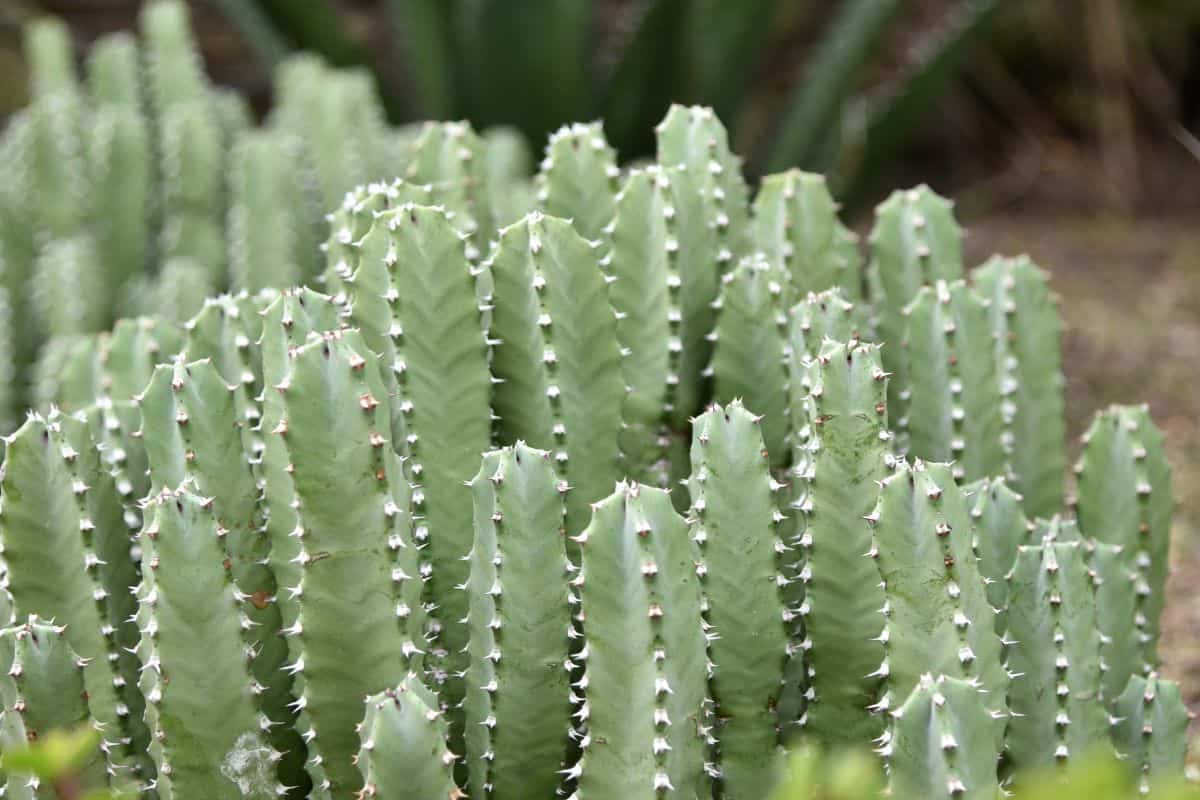
Buy it from:
If you wish to add medium-sized plants to your collection, be sure to check out the Moroccan mound. This succulent grows from 12 to 24 inches and is fairly easy to maintain.
Pretty much like the other succulents in this list, you just need to ensure that the soil is always drained. Plus, leaving them under direct sunlight will also help them grow.
The Moroccan mound has tubular stems. Also, the edge of each side has spines from which numerous thorns protrude, so you may want to be careful when handling them.
Growing Sun-Loving Succulents
Who would have ever thought you can grow an entire garden without getting exhausted every day? With low-maintenance succulents, that’s certainly possible. Just be sure to place them under direct sunlight and be mindful of how often you water them.
Excessive watering may cause them to rot, while too frequent will wither the plant. Now that you know what the best succulents for full hot sun are, the only thing left to do is to know where to get them.
Conclusion
The many different species that are available now as compared to ten or twenty years ago means that we have access to so much more information as well! This is the most up-to-date list that you can find! How do I know? Because I tried to find ones that were updated. Succulents change so often that you have to constantly update content.
If you want to look at more of the heavily researched content we have here, take a look at the blogs below!
Feel like I missed a succulent? Comment below!

